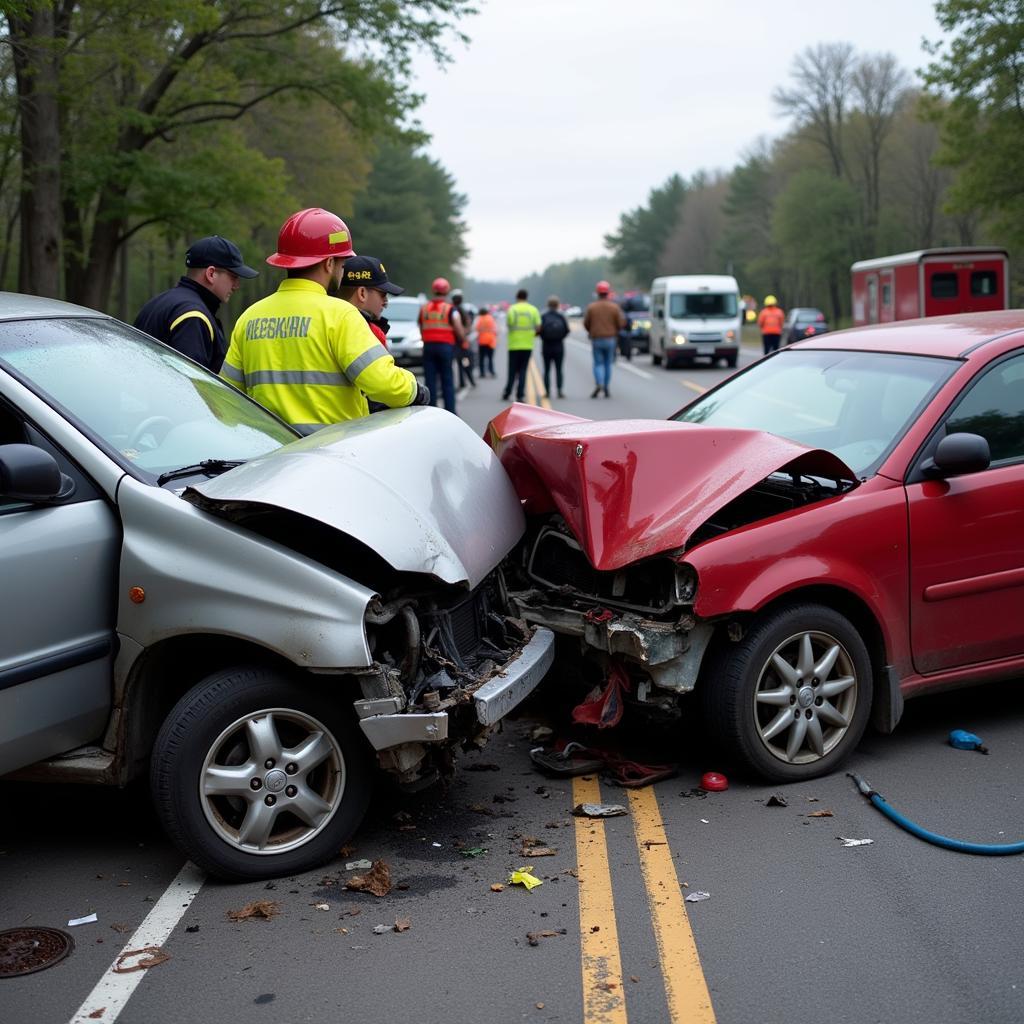Drunk driving, a reckless act with potentially life-altering consequences, leaves a trail of devastation that extends far beyond the individual behind the wheel. The Impact Of Drunk Driving On Society is profound, affecting not only those directly involved in accidents but also their families, communities, and the healthcare system.
 Aftermath of a drunk driving accident
Aftermath of a drunk driving accident
The Staggering Statistics of Drunk Driving
Statistics paint a grim picture of the pervasiveness and consequences of driving under the influence. Every year, countless lives are lost, and thousands more are forever changed due to alcohol-related crashes. These incidents often result in severe injuries, including traumatic brain injuries, spinal cord injuries, and broken bones, leading to lifelong disabilities and chronic pain.
Beyond the Physical Scars: The Emotional and Psychological Toll
The impact of drunk driving extends far beyond physical injuries. Families torn apart by the loss of loved ones endure immeasurable grief, anger, and guilt. Survivors of these preventable tragedies often grapple with PTSD, anxiety, and depression, requiring extensive therapy and support to rebuild their lives.
 Family mourns the loss of a loved one in a drunk driving accident
Family mourns the loss of a loved one in a drunk driving accident
The Economic Burden of Drunk Driving
The economic impact of drunk driving is staggering. The costs associated with medical care, property damage, legal proceedings, and lost productivity place a significant burden on individuals, families, and society as a whole. These expenses encompass emergency medical services, rehabilitation, vehicle repairs, insurance premiums, and law enforcement efforts.
Addressing Drunk Driving: A Collective Responsibility
Combating drunk driving requires a multi-faceted approach that involves education, prevention, and enforcement. Raising awareness about the dangers of drunk driving through public service announcements, school programs, and community outreach initiatives is crucial. Promoting responsible alcohol consumption, providing accessible and affordable transportation alternatives, and enforcing strict DUI laws are essential steps in curbing this preventable tragedy.
FAQs about Drunk Driving
What is the legal blood alcohol content (BAC) limit for driving?
The legal BAC limit for driving in most states is 0.08%. However, it’s important to note that even a small amount of alcohol can impair judgment and reaction time, making it unsafe to operate a vehicle.
What are some alternatives to drunk driving?
There are several safe and responsible alternatives to drunk driving, including:
- Designating a sober driver
- Using ride-sharing services like Uber or Lyft
- Taking public transportation
- Calling a taxi or car service
- Staying overnight at your location
What should I do if I see a suspected drunk driver on the road?
If you suspect someone is driving under the influence, it’s crucial to prioritize safety and contact law enforcement immediately. Provide the dispatcher with a detailed description of the vehicle, its location, and the driver’s behavior.
Seeking Help and Support
If you or someone you know is struggling with alcohol abuse, there are resources available to help. The National Highway Traffic Safety Administration (NHTSA) and organizations like Mothers Against Drunk Driving (MADD) provide valuable information, support groups, and resources for victims and their families.
Drunk driving is a serious issue with far-reaching consequences. By understanding the devastating impact of this reckless act, we can work together to prevent future tragedies and create a safer society for everyone.